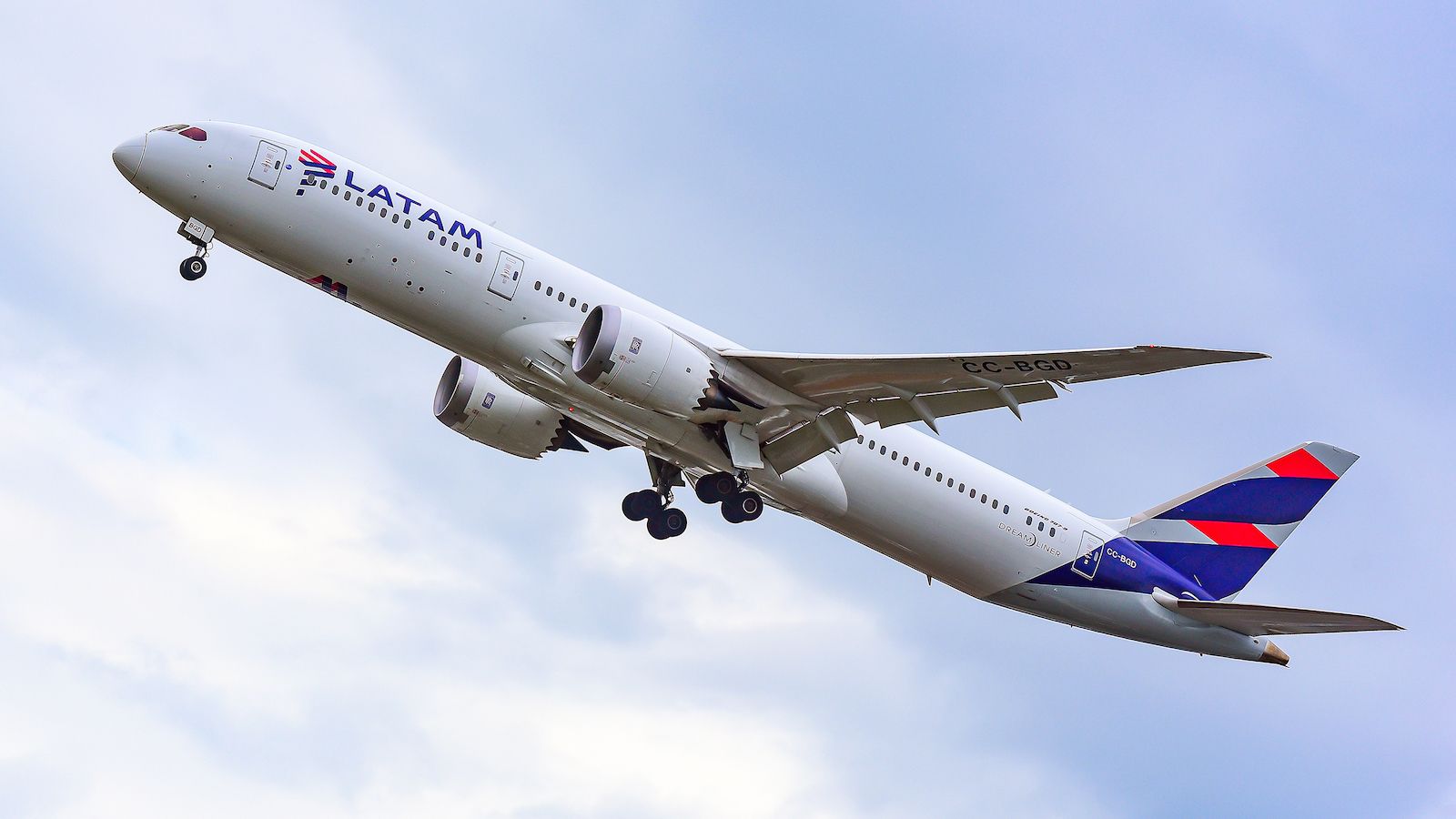Summary
- A LATAM Boeing 787 had to return to Santiago due to suspected fuel leak after flying for one hour and twenty minutes on its way to Auckland.
- The incident resulted in the cancellation of onward and return flights, but the aircraft returned to service the same day.
- The crew noticed the decline in fuel early on, avoiding a potentially stressful situation over the Pacific Ocean, with some possible diversion airports.
On August 23rd, a Boeing 787 operated by LATAM had to divert and return to its origin airport after a fuel leak was suspected by the crew. The aircraft was flying from Santiago, Chile, to Auckland, New Zealand, when the incident occurred.
Consuming too much fuel?
On Wednesday, August 23rd, a LATAM Chile Boeing 787-9 departed Santiago International Airport (SCL) at 02:10 as flight LA801. This flight was meant to be an approximately 12-hour service to Auckland. However, this was cut short as the aircraft returned to Santiago after flying for one hour and 20 minutes.
The aircraft was en route to Auckland at an altitude of FL330, 350NM (648km) south-southwest of Santiago, when the crew determined that a return to Santiago would be required. According to reporting by The Aviation Herald, the jet descended to FL320 as it returned to its origin airport. A safe landing was then performed on SCL's runway 17R.
As per the account of a traveler onboard, The Aviation Herald notes that the crew had made an announcement to passengers that the aircraft was consuming more fuel than expected and thus did not have enough for the full flight to New Zealand. A fuel leak would have been a strong possibility under such circumstances, although the exact technical issue has not been confirmed.
Get all the latest aviation news right here on Simple Flying.
Onward and return flights canceled
The August 23rd diversion resulted in the cancelation of flight LA801 for the day, with the next iteration of the service taking place the next day. LA801 also includes a second sector which takes travelers from Auckland to Sydney. This, in addition to the return legs of flight LA800, was canceled.
The aircraft involved is registered CC-BGR and is one of 21 Boeing 787-9s operated by the LATAM Airlines group. The aircraft has manufacturer's serial number (MSN) 38481 and Line Number 1086 and is just under two-and-a-half years of age. The jet is powered by a pair of Rolls-Royce Trent 1000-J2 power plants.
Although flights were canceled, CC-BGR managed to return to the skies within the same day of the incident. Indeed, the airframe operated flight LA532, a service from Santiago to New York JFK. The Dreamliner has been operating every day since the incident, also flying to Miami.
Few diversion airports in the South Pacific
Fortunately, the crew noticed the faster-than-normal decline in fuel quantity early in the journey and decided to divert before going further across the Pacific Ocean. Indeed, the most suitable diversion airports in the middle of the South Pacific would be Mataveri International Airport (IPC) on Easter Island and Fa'a'ā International Airport in French Polynesia - otherwise known as Papeete (PPT).
While we don't know how quickly the incident aircraft was losing fuel, it certainly could have presented the flight crew with a stressful dilemma had they noticed later on in the flight.
What do you think of this incident? Share your thoughts by leaving a comment!
Sources: Planespotters.net, FlightRadar24.com, ch-aviation.com, The Aviation Herald




